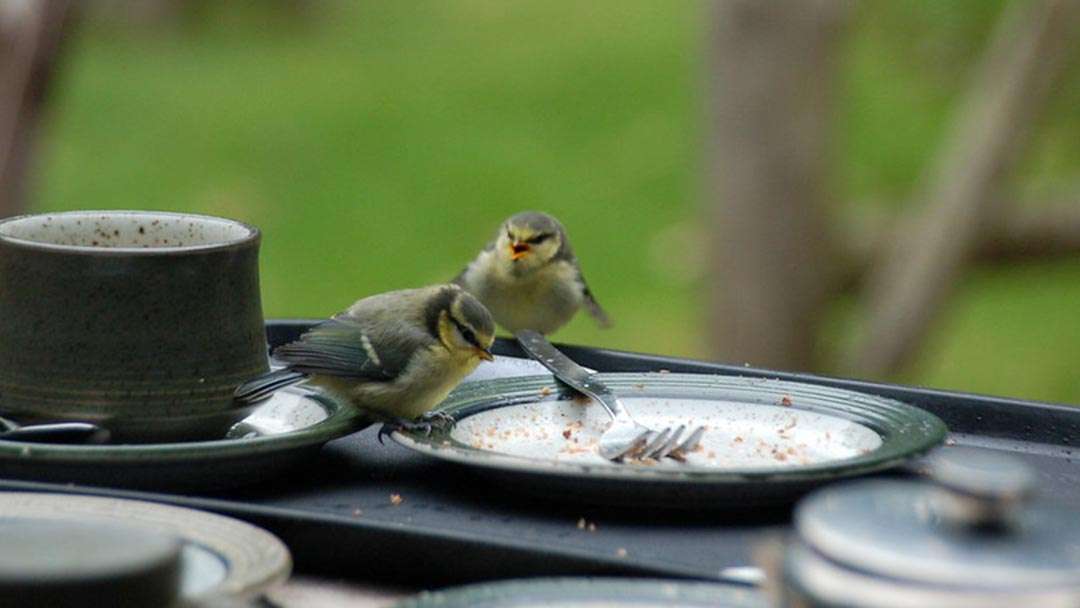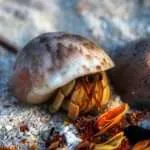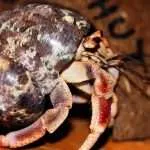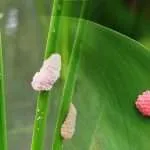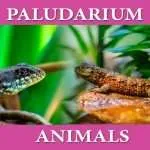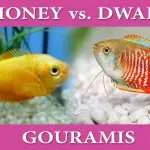What do you feed a starving baby bird when you come across or when you adopt one? The truth is this, the feeding and dietary needs of a baby bird can be quite demanding, but it’s not rocket science.
Techniques on how to feed a baby bird and what to feed a baby bird have been developed by bird lovers.
A baby bird is born or hatched wet, naked, blind and weak to do anything. They are dependent and vulnerable and when they fall from their nest or get lost in the wild, survival might be difficult.
So, when you come across one or you chose to adopt one, how do you care for such a bird?
First, there are two terms used in describing young birds.
Nestlings:
They are baby birds that are without feathers and have pink skin. They are incapable of moving and are usually in the nest.
Fledglings:
They are young birds that no longer needed in the nest but are still dependent on their parents.
Before feeding a baby bird – a nestling or a fledgling – it is important for you to be sure what you see is a baby bird and not a sick bird. Some birds when sick or stunned will be mistaken for a baby bird.
Note: this article focuses more on fledglings than nestlings but can be adopted for both.
Now how do you identify a fledgling?

There are some features and behavior that are pointers to tell the age of a bird. Some of the features to look out for include: the length of the feather, the color of the bird and the markings of the bird amongst others.
Besides, a fledgling will exhibit some youthful characteristics – both physical and behavior.
The following are some features that will help you know if what you have on sight is indeed a baby bird:
- Bill size: The bill size of a baby bird is usually larger than its head because the head is yet to fully develop. Also, the bill size appears larger because feathers are not covering the edges of the bill.
- Feather Length: The feather length of a baby bird makes the bird unable to fly. The feathers on the breast, flanks, and abdomen are usually fluffy and less organized compared to adult birds. Some baby birds will even show bare skin, especially on the face because the feathers are not yet developed.
- Size of the Eyes: Baby birds have bulging eyes that seem bigger than their heads.
- Behavior: Fledgling will always exhibit behaviors to get the attention of the parents. This feature might not be 100 percent accurate in determining whether the bird is a baby or an adult but it is a valuable clue.
How Many Times Do I Feed a Baby Bird?

The frequency of feeding a baby bird depends on the age and growth of the bird. Generally, baby birds require special care and are to be fed more often than adult birds. Below is a guideline on the right quantity to feed a fledgling:
Newly hatched chicks should be fed for the first 12 – 24 hours after hatching.
Chicks less than a week should be fed every 6 to 10 times per day every 2 – 3 hours.
Chicks yet to open their eyes should be fed 5 to 6 times per day while the one with opened eyes should be fed 3 to 5 times per day.
Once there’s visible signs of feathers growth, 2 to 3 times per day feeding.
A strong feeding response from the bird is a sign that the young bird is healthy and growing.
Also, the young bird must excrete. When this does not happen, it’s an indication of some type of problem.
What do I Feed a Baby Bird?

When it comes to the diet of a baby bird, there are some things noteworthy.
First, the diet of a baby bird depends on the species, the metabolism of the bird and the age of the bird.
The diet requirements of birds are not the same – a Cockatiel’s diet will differ from a Sparrow’s or a dove’s diet.
Some species of baby birds will eat bugs or worms while another bird will feed on seeds.
Knowing the species of the fledgling and what the adult bird of such species eats might help.
Although, the diet of a baby bird is different from what the adult will eat.
Baby birds are unable to break down foods on their own, they depend on their parents to regurgitate the food before feeding the baby bird the food.
This means the birds’ parents must first partially digest the food first before giving it to the baby.
When left in the wild, baby birds will eat earthworms, crickets, insects, and seeds. But as a pet parent, you cannot start with this, a hatchling cannot digest insects yet.
Diets for Baby Birds
Numerous commercial hand-feeding diets can be given to the baby bird.
Pet parents can feed a fledgling puppy food soaked in water, raw liver, moistened dog biscuits, moistened dog or cat kibble.
As time goes on and as the fledgling develops, finely chopped vegetables and fruits – corn or peas, little insects can be introduced.
The diet of a baby bird should be rich in insects that serve as protein to the bird.
When the protein level is less than 28 percent, it can lead to delayed and stunted growth, swollen bellies, listlessness and makes the fledgling susceptible to disease.
A high level of protein will also lead to gout and kidney damage.
The calcium level should not be kept low as this will affect the bones and rickets.
Do not feed a young fledgling any of the following:
Water (water is important but not recommended for a hatchling). Water should be administered only when the baby bird starts walking or perching.
Others include milk, worms, bread, pet bird foods and remnants from your kitchen.
As the baby bird grows, adult food can be introduced and consumed without any consequence.
Method of Feeding a Baby Bird?
The safest way of feeding a baby bird is hand-feeding. Hand-feeding a baby bird is a method used by pet parents to feed a bird.
You must know by now that the survival of a baby bird relies heavily on the pet parent (since its parents are unavailable) who cares for it.
The hand-feeding method requires patience and commitment and should be used by experienced bird breeders.
A feeding device – eye dropper or a syringe – (some prefer spoon) is what you’ll use to feed the bird. A syringe is your best option as it gives you an accurate measurement of what you’re feeding the fledgling.
The food is then sucked into the device before putting it into the mouth of the bird for consumption.
This may or may not be an easy task. Some birds will be eager to have something and will open their beak wide to receive food while some will not show any sign, a gentle tapping of the beak with the device will encourage the bird to feed.
Note, never force the bird’s bill to open.
The Crop
Birds have a feature called the Crop, a sac that is located over the front of the bird’s chest at the base of the neck.
The crop is usually visible in baby birds when the feathers are underdeveloped while in adult birds with a developed feather, the crop is covered and can only be felt by placing a finger on the spot.
When feeding a fledgling, it is necessary to check the crop before administering food. Checking the crop before feeding helps you determine the volume and frequency of food to be given.
The volume of food given to the fledgling is important, overfeeding could lead to death as the crop cannot hold a lot of food while underfeeding could lead to starvation.
The best time to feed a young bird is when the crop is empty but not empty. The crop will normally empty after 4 hours but will remain full or not empty if there’s some type of problem.
When feeding, the crop should be monitored to ascertain if the bird is full or not.
Signs that a baby bird needs a vet:
When caring for a baby bird, there’s the possibility of something going wrong. The following are some signs that a baby bird will give that tells you it’s time for a visit to the vet.
- Refusing to eat
- Not gaining weight or abnormal growth
- Abnormal posturing of wings or/and legs
- Continuous chirping
- Loss of sleep
- Not excreting
On a final note, some feeding tips:
Food should not be prepared to be warmed or refrigerated, it should be prepared fresh and offered immediately.
Food temperature should be between 102 and 106 degrees Fahrenheit (39 – 41 degrees Celsius). Too hot food will burn the crop and too cold food will be refused or cause indigestion. A thermometer is recommended to get an accurate temperature.
Food should be offered in small proportion, a baby bird will need to be fed in tiny bits, not chunks.
Handling is very important when feeding a fledgling. Touching should be very minimal to avoid inflicting pain on the bird. No forceful or tough touching.
Weaning is important else the fledgling will become used to hand-feeding and will refuse to eat on its own.
During the weaning period, the bird can be fed with pellets. If you have an adult bird, you can put the baby bird in a cage next to the adult to mimic.
Visiting your local pet store will also be beneficial for guidance and information.

